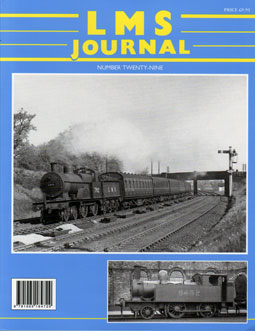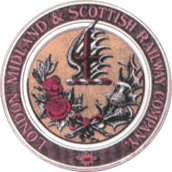LMS JOURNAL
Issues
LMSJ Issue 29
ISBN 978 1 905184 72 9
Contents
|

|
EDITORIAL
For many years after I left railway service I was engaged in sales and marketing, and one thing I learned was to listen to what customers had to say. Not everything made sense but generally themes would emerge and your sales and market position would improve if you could produce what customers wanted rather than what you thought they should have.
I have long held the view that while the preserved railways do a splendid job and show steam traction in action, they cannot fully replicate the traditional steam railway that finally came to an end in the United Kingdom in 1968. I also take the view that carefully constructed models have considerable education value and they can illustrate the Victorian steam railway in its many guises in a way that cannot be done with full size preserved stock. Therefore I have tried with LMS Journal and Midland Record to produce articles that are rather different to what you will find in the mainstream railway magazines.
When my dear friend, the late David Jenkinson, was alive, our concentration was to unravel the livery aspects of locomotives and carriages, but we quickly realised that you had to identify everything before you could describe the subject of livery. Now more than forty years on since the end of steam traction, I realise that the understanding of how the railway was worked is not widespread but it is a subject that interests people. I would like to think that, on occasion, Midland Record and LMS Journal tell you about the working practices employed, but I would be very interested to learn what subjects interest readers and what you would like to read about in future issues of LMS Journal. My own particular interest is in the operational aspects of the day to day working of the line, with particular emphasis on the main lines, but readers may have other ideas. By the time this issue is in print, a lot of work in respect of future articles will have been done, but your views and comments will be very useful. Please feel free to contact me either by post through the editorial office in Didcot or by email.
I look forward to reading what you have to say and providing I am not totally swamped I will endeavour to respond.
Bob Essery
Site contents Copyright © Cygnet Magazines Limited, 2014-2025.




